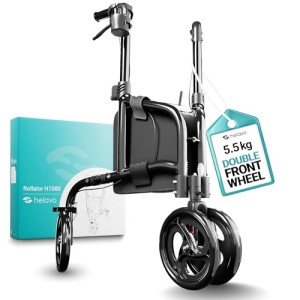Understanding Mobility Assistance: A Comprehensive Guide
In a significantly active world, mobility assistance has actually ended up being vital for lots of individuals. Whether due to age, injury, or chronic disease, mobility challenges can significantly affect life. This blog site post looks into the various forms of mobility assistance, their benefits, and practical factors to consider for those looking for assistance.
What is Mobility Assistance?
Mobility assistance encompasses a range of services, gadgets, and adjustments created to help individuals move securely and efficiently. It aims to boost independence for those with troubles in motion, enabling them to perform everyday activities and engage with their environments.
Kinds Of Mobility Assistance Devices
Mobility assistance gadgets can differ extensively, from easy to complex help. The following table describes some common kinds of mobility assistance devices, their descriptions, and suitable usages:
| Type of Device | Description | Appropriate For |
|---|---|---|
| Wheelchairs | Wheeled mobility devices for people with minimal walking capability. | Permanent or short-term mobility needs. |
| Walkers | Frames with four legs, supplying support while walking. | Individuals needing a stable aid. |
| Canes | Lightweight sticks using support; consists of standard and quad walking sticks. | Those with moderate mobility issues. |
| Crutches | Gadgets created to transfer weight off the legs. | Post-surgery healing or injuries. |
| Mobility Scooters | Motorized automobiles supplying transport over brief ranges. | Those with mobility problems. |
| Stairlifts | Motorized chairs that move up and down stairs. | Multilevel homes with stair availability issues. |
| Home Modifications | Structural changes, such as ramps or broader doorways. | Enhancing home ease of access for wheelchairs or walkers. |
| Transfer Aids | Devices like sliding boards or lift systems for much easier transfers. | Assistance in transferring to and from chairs or beds. |
Advantages of Mobility Assistance
The importance of mobility assistance extends beyond physical motion. Here are a number of key advantages:
- Enhanced Independence: Mobility gadgets empower users to carry out day-to-day jobs individually, fostering self-sufficiency.
- Enhanced Quality of Life: By enabling higher involvement in social activities, mobility assistance adds to psychological well-being and social integration.
- Security and Support: Devices like walkers and canes provide physical support, decreasing the danger of falls and injuries.
- Access to Healthcare: Mobility assistance can simplify transport to medical consultations, ensuring users receive vital care.
- Modification Options: Many mobility devices can be customized to match specific needs and preferences, ensuring convenience and functionality.
Typical Mobility Assistance Challenges
While mobility assistance can pave the method for greater independence and improved lifestyle, different obstacles might occur. Some of the common issues consist of:
- Cost: Mobility devices can be pricey, and insurance protection might differ significantly.
- Training and Familiarization: Learning to use new devices appropriately may need time and assistance.
- Availability Issues: Not all environments are equipped to accommodate mobility devices, causing potential barriers.
- Stigma: Social preconception around making use of mobility help can impact self-confidence for some people.
Supplying and Receiving Mobility Assistance
To ensure the most reliable assistance, it is important for both providers and recipients of mobility aid to consider a number of elements:
- Assessment of Needs: An extensive examination by a healthcare specialist can figure out the specific type of assistance needed.
- Trial Period: Trying out devices can help people find the one most matched to their lifestyle and choices.
- Regular Maintenance: Maintenance of mobility gadgets guarantees resilience and security.
- Education: Providing training on the appropriate use of mobility aids is important for optimizing advantages.
Mobility Assistance FAQs
Q1: What types of mobility help are readily available?A: Common mobility aids include wheelchairs, walkers, walking canes, crutches, and scooters, to name a few. Each device is created to satisfy particular needs and choices.
Q2: Where can I get mobility assistance devices?A: Mobility devices can be acquired from medical supply stores, online retailers, or through healthcare company recommendations.
Q3: Will my insurance cover mobility assistance gadgets?A: Many insurance coverage plans use partial coverage for mobility help, however protection can vary based upon the policy. It's recommended to contact the insurer for specific details.
Q4: How can I adapt my home for mobility assistance?A: Home adjustments like ramp installation, larger doorframes, and get bars in bathrooms can significantly improve accessibility. Consulting with an occupational therapist can provide customized services.
Q5: How do I pick the ideal mobility aid for me or an enjoyed one?A: Assess the individual's mobility needs, weight capability, and way of life. Trying different devices can likewise assist in picking the one that feels most comfortable and functional.
Mobility assistance plays an essential function in boosting the independence, security, and quality of life for people facing mobility difficulties. From basic walking sticks to complex mobility scooters and home modifications, a variety of alternatives exist to fulfill unique requirements. As Stylish Walker continues to acknowledge the significance of availability, the combination of mobility assistance options into everyday life will improve, ensuring that everybody has the chance to lead a fulfilling and active way of life.
By understanding the available choices and benefits, people and their households can make educated decisions that support their mobility requires.

